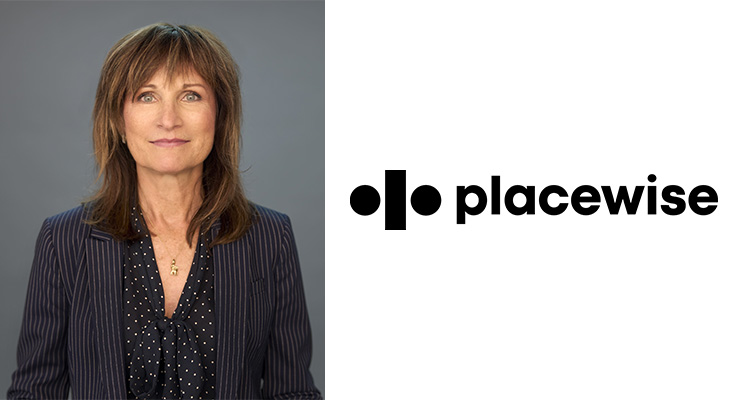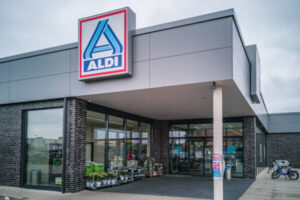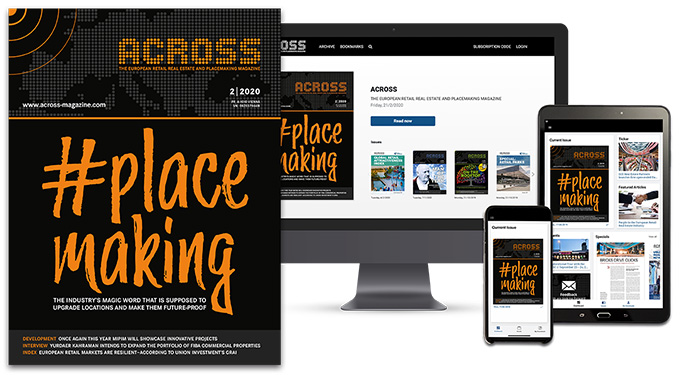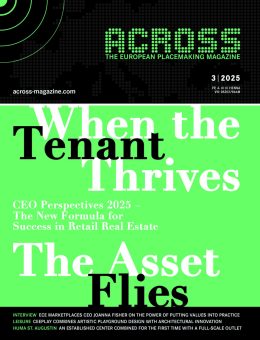The relationship between center management and tenants is being rewritten. The traditional dynamic, where tenants lease space and landlords provide it, is no longer enough. Today’s tenants want more. They want support, insight, agility, and most importantly, a partner in performance. Retail real estate is evolving quickly. As consumer behavior continues to shift and the lines between physical and digital commerce blur, tenants are asking harder questions. They are also looking to center management for more collaborative answers. In this new tenant era, space alone is not the product. Shared infrastructure, digital capabilities, and aligned strategy are becoming just as critical. This shift presents an important opportunity. Forward-looking commercial real estate companies are already embracing it and setting themselves apart.
FROM SQUARE METERS TO SHARED OUTCOMES
Tenants often evaluate where to lease based on a number of key factors, such as size, location, reputation, tenant mix, and footfall potential. While those fundamentals still matter, they are now part of a broader equation, including important questions such as:
- Does center management help drive traffic, not just house it?
- Do they offer digital tools to engage and retain shoppers?
- What loyalty or CRM platforms are in place to create long-term value?
- How flexible is the infrastructure to support in-store events, campaigns, or new retail formats?
- Are they collaborative?
These questions reflect a deeper shift in priorities. Tenants no longer just lease space; they want to invest in ecosystems that include digital tools, data access, and shared infrastructure that directly support performance. When a landlord can answer such questions with confidence and a spirit of collaboration, the relationship between the landlord and the tenant becomes far more valuable.
FROM SPACE PROVIDER TO STRATEGIC BUSINESS ENABLER
At Placewise, we’ve seen firsthand how landlords who invest in digital infrastructure can become true business partners to their tenants. By offering tools like centralized CRM systems, loyalty platforms, and integrated communication channels, center management can move beyond traditional marketing tactics. They begin to actively influence outcomes such as increased visits, longer dwell times, and higher spending. These tools deliver measurable impact. They support leasing teams with insight, help operations respond to patterns and trends, and give tenants the kind of data and functionality that used to be exclusive to online retail.
That is why such technology should be recognized as part of sales, leasing, and operations – not just treated as a budgeting line for seasonal promotions or brand visibility. It is digital infrastructure. It is strategic. It plays a central role in long-term performance and can be a powerful tool when it comes to attracting new tenants and justifying the tenants’ marketing contributions.
DIGITAL TOOLS AS PLATFORMS FOR COLLABORATION
Digital infrastructure also enables a higher level of collaboration between management and tenants. A shared platform with access to visitor data, campaign results, and customer behavior builds trust and creates real opportunities to align strategies.
This is not about control or oversight. It is about empowering tenants to make better decisions, craft more relevant experiences, and participate in coordinated center-wide efforts. When landlords offer loyalty platforms, for example, tenants gain access to a broader and more engaged audience. CRM insights help tenants personalize offers and improve conversion rates. Shared event or campaign data enables both sides to learn and refine their tactics. The result is a more agile, informed, and collaborative ecosystem. Everyone benefits.
CHANGING THE ROLE OF THE LANDLORD AT THE C-SUITE LEVEL
All of this signals a shift in leadership mindset. CEOs, asset managers, and leasing directors must now ask a different kind of question.
Instead of focusing solely on maximizing lease terms, they should ask how to ensure tenants thrive within the environment they have created. A tenant’s success contributes to the performance of the center as a whole.
Engagement at the executive level must begin earlier and continue more frequently. Strategic meetings should go beyond lease negotiations and cover campaign planning, promotional opportunities, digital tools, and shared business objectives. This also means revisiting internal structures. Marketing leaders are not just brand stewards – they convey performance data and customer insights that are directly relevant to leasing strategies and operational planning.
FROM DEFENSIVE TO PROACTIVE: A BLUEPRINT FOR RESILIENCE
The innovative, forward-looking management teams are not waiting for tenants to raise concerns or make requests. Instead, they are looking ahead, using data to anticipate needs, understand category trends, and align with evolving retail formats. This approach results in stronger relationships and better outcomes. It helps ensure that successful tenants are retained, attracts innovative brands, and builds a foundation for resilience – even during uncertain economic cycles.
Investing in technology that informs strategy, enables omnichannel integration, and supports dynamic leasing decisions is part of this proactive model. Making performance data both accessible and actionable is as well.
FINAL THOUGHTS: REDEFINING THE BUSINESS OF RETAIL REAL ESTATE
Retail centers are no longer defined solely by location. They are defined by connection, and connection today is powered by shared data, insight, and aligned goals.
A new tenant mindset requires a new landlord mindset – one that embraces digital infrastructure not as a support function but as a strategic pillar. A mindset that treats loyalty, CRM, and campaign tools not as marketing extras, but as essential components of footfall, spend, and long-term performance is essential. Centers that step into this role – as active enablers of retail success – will not only retain strong tenants but also attract the next wave of innovators.
In today’s market, offering space is just the beginning. The real value comes from offering the tools and partnership that help tenants thrive.






